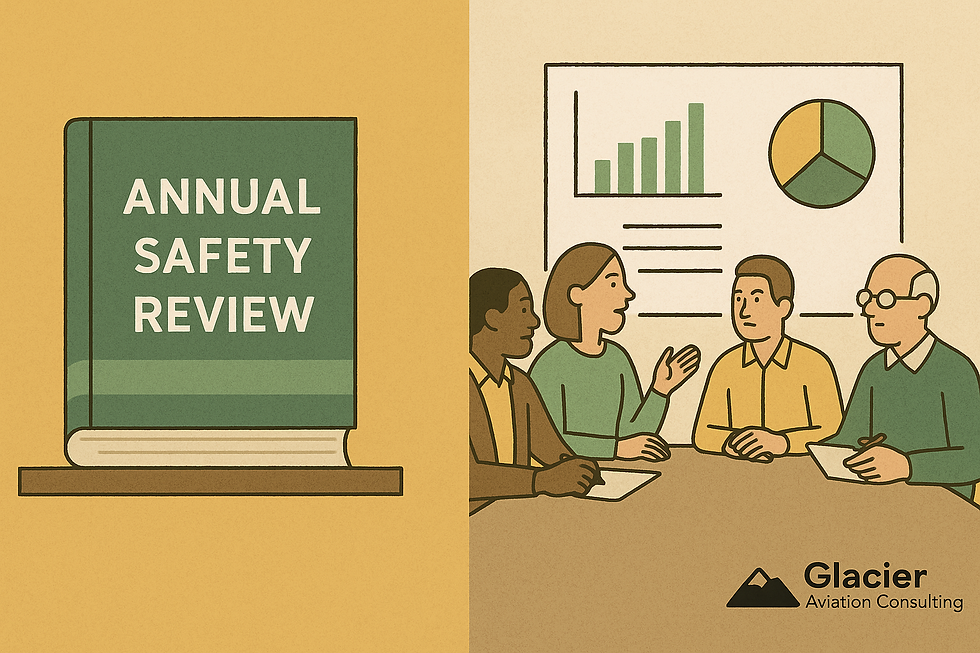Myth Buster: Safety Data Is Just for Regulators
- Margrét Hrefna Pétursdóttir
- Sep 5
- 2 min read
❌ Myth: Safety data is something you collect because the authority requires it.
✅ Reality: Safety data is one of the most valuable tools available to operators, when it is used for decision-making inside the organisation.

Why This Myth Exists
For years, safety reporting and occurrence databases have been linked to regulatory compliance. Many still see the process as paperwork: reports are collected, filed, and sent “upwards” to satisfy the authority.
But when data only flows one way, the organisation misses the chance to learn.
The Real Value of Safety Data
Safety data is not just for the regulator. It is for you.
Airlines and Flight Ops → learning from serious incidents before they become accidents.
Part-145 & CAMOs → spotting maintenance trends, weak points in procedures, and recurring human factors issues.
Ground Handlers → preventing repeat accidents and injuries on the apron.
When organisations use their own data proactively, it becomes free intelligence, helping to improve procedures, save money, and protect staff.
Connecting the Dots
This week, we have already seen how data can be turned into action:
On Monday, I explained how the 2025 Annual Safety Review is not just statistics, it is a tool operators can use to guide local safety meetings and decisions.
On Wednesday, we saw how data on cabin and ground staff injuries reveals systemic risks that can be addressed through better training, reporting, and CRM.
Both examples show that data has value far beyond compliance.
From Data to Action
If safety reports only go into a database, nothing changes. If they are used to spark questions, guide risk assessments, and shape training, then data becomes the foundation of a strong safety culture.
💡 Safety data is not paperwork. It is free intelligence for your organisation.
Takeaway
The myth that “safety data is just for regulators” is holding organisations back. Those who treat it as a living tool, not just a compliance task, are the ones who build resilience, save costs, and strengthen trust.
👉 Discussion point: How does your organisation use safety data?



Comments